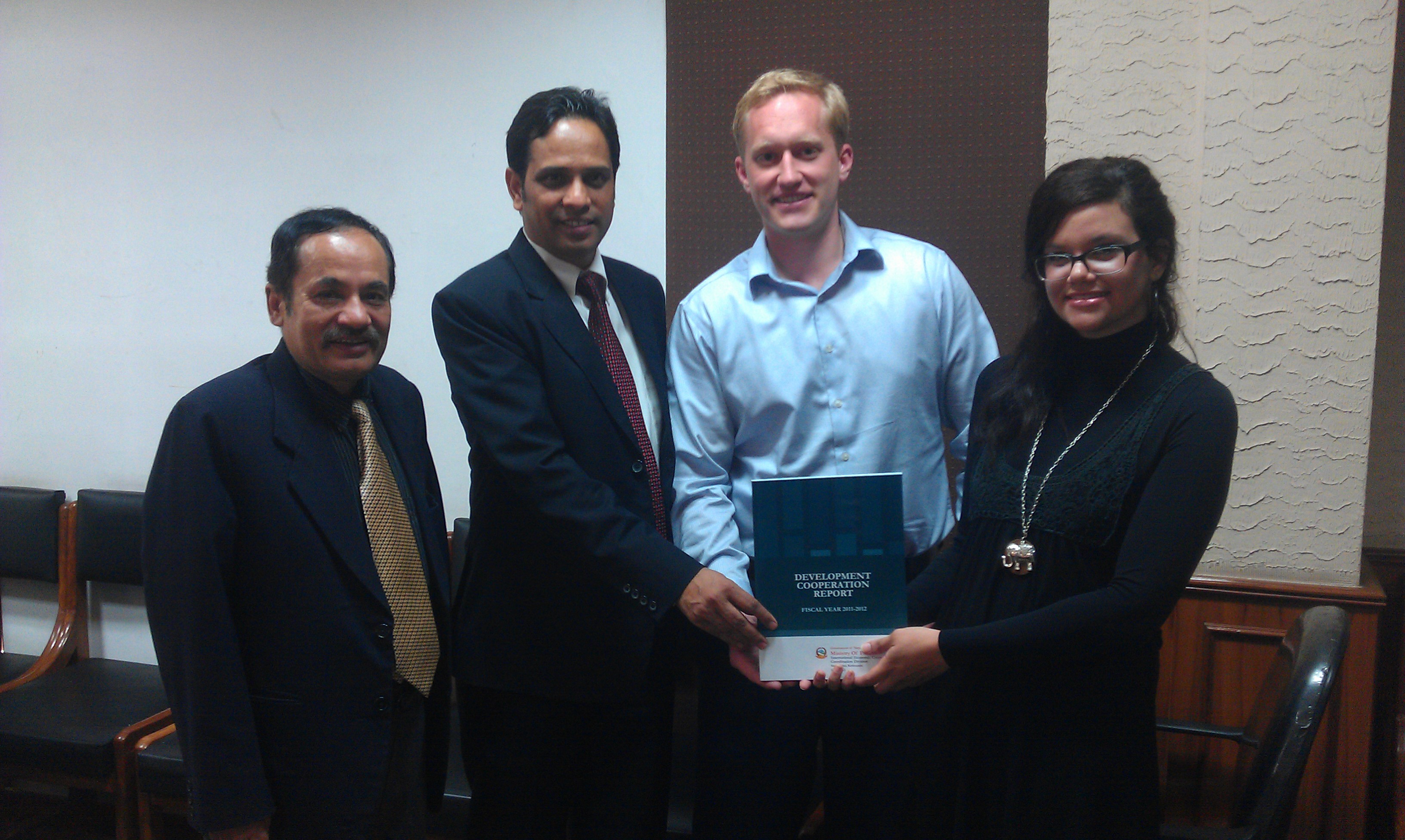Home » Nepal's AID Management Platform: A Tool for Managing Aid in Nepal and Making it More Effective
![]() (388k) Nepal's AID Management Platform: A Tool for Managing Aid in Nepal and Making it More Effective
(388k) Nepal's AID Management Platform: A Tool for Managing Aid in Nepal and Making it More Effective
Foreign aid is a critical component in Nepal’s development. According to the Ministry of Finance’s recently published Development Cooperation Report, foreign aid in Nepal accounts for 26 percent of the national budget. With over forty donors providing official development assistance to Nepal, who have committed US 1.21 billion to development investment in 2011-2012, coordinating, monitoring, and evaluating Nepal’s volume of aid is not an easy task.
The Aid Management Platform was set-up in Nepal’s Ministry of Finance in 2010 to assist the Ministry of Finance’s International Economic Cooperation Coordination Division (IECCD) in its mandate to oversee the coordination and management of foreign aid in Nepal. The Aid Management Platform, AMP for short, has been a highly effective tool in standardizing and centralizing information about foreign aid flow within Nepal. With a comprehensive data management plan in place, both donors and the IECCD report off- and on-budget projects respectively into the AMP. The information in AMP, particularly the financial information, is used by a wide array of stakeholders for reporting, analysis, and planning. The IECCD, the donor community, line ministries, and the National Planning Commission all benefit from having a centralized and easily-accessible hub of information about foreign aid in Nepal.
I have had the pleasure to witness AMP at work in Nepal for the past five months. I came to Kathmandu in February 2013 to support USAID’s efforts to improve the Aid Management Platform with the goal to fully geo-code Nepal’s AMP by Summer 2013. I work for the USAID partner, Development Gateway. Geo-coding essentially means attaching a project location to a project, such that a project can be effectively visualized on a map. Over the past months, I met with international donors in order to collect the necessary location information needed to geo-code their projects. In June 2013, we successfully completed geo-coding Nepal’s AMP. Seeing this goal come to fruition is very exciting, particularly since working with the mapping module within Nepal’s AMP will allow for a new way to comprehensively and visually analyze foreign aid flow.
Having spent a lot of time in the weeds of the foreign aid scene here, I am happy to report that my interaction with both the donor community and the Ministry of Finance has largely exceeded my expectations and has left me with much optimism for the future of this sector. I have seen first-hand the Ministry of Finance taking concrete steps to hold up its commitment to improve aid management, aid transparency, and aid effectiveness via institutionalizing and utilizing the AMP within the government, implementing state-of-the-art initiatives, such as geo-coding its AMP and publicly releasing AMP’s information, in addition to conducting district-level trainings around the country to strengthen the capacity of district-level officials. I have also seen the donor community’s enthusiasm, support, and forward-thinking to improve aid coordination in Nepal – the near unanimous support for the geo-coding efforts that have been taking place, in addition to their commitment to keep the information updated on a regular basis, gives me the confidence to say that there is indeed a supportive donor community here in Nepal.
However, there is much work still to be done. Ensuring aid transparency and coordination is a responsibility that does not only lie with the government and the donor community. A vibrant and active civil society and well-informed citizens, who seek accountability and better results, are a critical component in ensuring that the development priorities of Nepal, specifically at a local level, are being met. I have interacted with a number of non-governmental organizations and civil society organizations here in Nepal who are working very diligently in this regard and who are also quite eager to make use of, and disseminate the information found in, the AMP public portal. Making the information in AMP public was an important first step in opening up the doors to aid information. However, it is equally important for this information to be utilized by the broader community within Nepal, in order for the country to reap the full benefit from such an initiative. Thus, the launching of Nepal’s AMP is not just a one-stop-shop solution to aid information problems. Rather, it’s a call to action to the citizens of Nepal to take part in making aid more effective.
Dina Abdel-Fattah is a Data Support Expert at Development Gateway, Inc. and is a USAID Geo-coding Aid Management Fellow. Since February 2013, she has been based in Kathmandu, Nepal to gather and collect the necessary information from donors to help realize USAID’s goal to fully geo-code Nepal’s Aid Management Platform by Summer 2013.
Photo Credit: Dina Abdel-Fattah








Comment
Make a general inquiry or suggest an improvement.